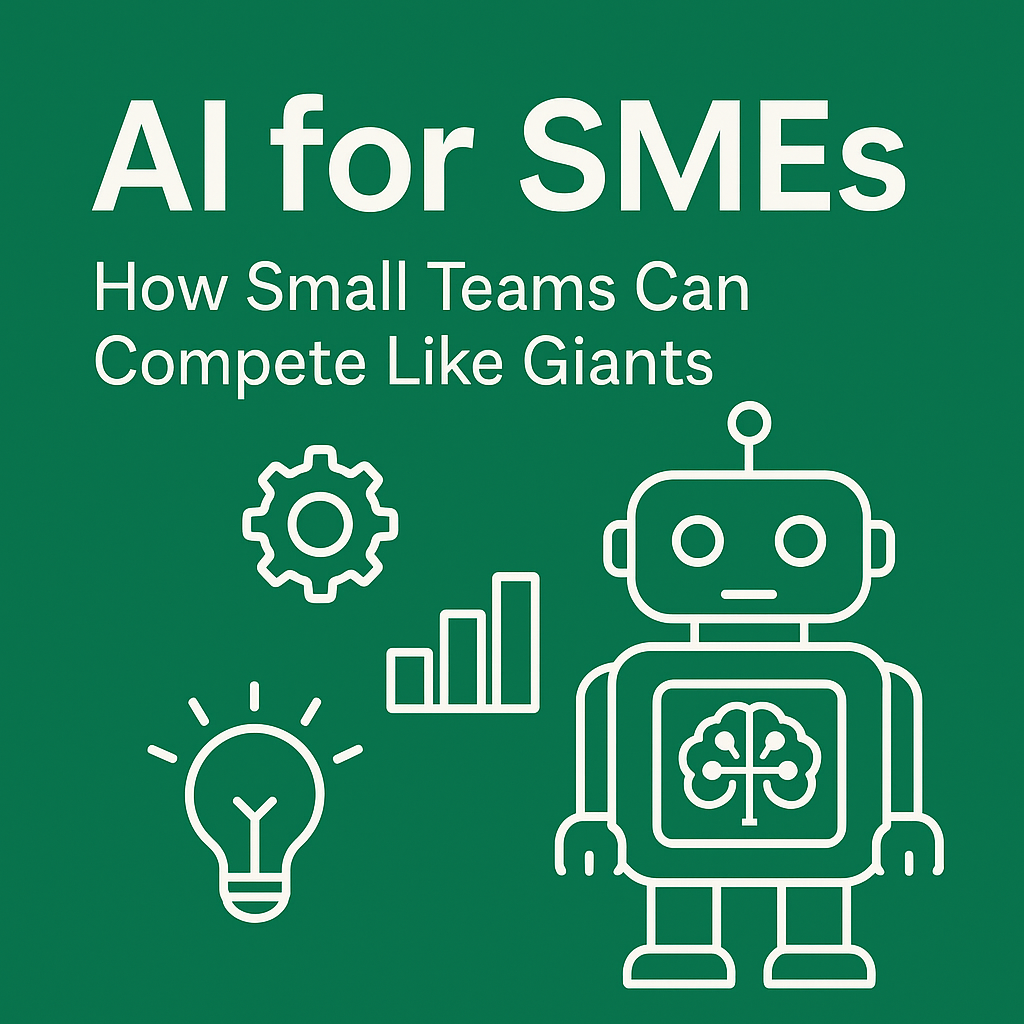
AI for SMEs: How Small Teams Can Compete Like Giants
Share
In the past, cutting-edge technology like artificial intelligence (AI) was reserved for companies with deep pockets and large tech departments. But times have changed. Today, small and medium-sized enterprises (SMEs) can tap into the power of AI without breaking the bank or hiring an army of developers.
In fact, smart use of AI can level the playing field, helping SMEs punch well above their weight.
Why AI is No Longer Just for Big Business
Cloud-based tools, no-code platforms, and off-the-shelf AI solutions have democratized access to powerful technology. From automating tedious admin work to enhancing customer experiences, AI is already transforming how SMEs operate.
Let’s explore a few key areas where SMEs can get the biggest bang for their buck:
1. Automating Admin and Operations
Problem: Small teams often get bogged down by manual tasks that drain time and reduce focus on strategy.
AI Solution: Use tools like Zapier or n8n to automate workflows such as:
-
Sending follow-ups
-
Processing form submissions
-
Syncing data across platforms
Example: An event agency used AI workflows to handle 100+ departmental submissions for branding materials. This saved 50+ hours of email coordination per event.
Problem: Providing fast, round-the-clock support can be tough for lean teams.
AI Solution: Chatbots like Intercom Fin or ChatGPT integrations can respond to FAQs, handle order tracking, and even resolve simple queries.
Example: An ecommerce store deployed an AI assistant that reduced support tickets by 30% in the first month.
Problem: SMEs often rely on generic campaigns due to lack of time or resources.
AI Solution: Tools like Klaviyo and Mailchimp with AI-powered segmentation help send targeted messages based on user behavior.
Bonus: AI copy tools like Jasper or Copy.ai help generate email or ad content quickly and effectively.
Problem: Many SMEs still rely on gut instinct instead of insights.
AI Solution: Use tools like Google Looker Studio or Power BI paired with AI analytics to surface trends and forecast outcomes.
Example: A retail SME used predictive analytics to optimize inventory and saw a 20% reduction in overstock.
-
Identify your biggest time sinks or bottlenecks
-
Choose 1-2 use cases where AI could help (start small)
-
Use off-the-shelf or no-code tools to build initial workflows
-
Track ROI: Time saved, support tickets reduced, conversions improved
-
Scale what works
AI isn’t just about robots and futuristic tech. For SMEs, it’s about working smarter, reducing costs, and gaining a competitive edge. With the right mindset and tools, small teams can compete—and even outpace—much larger players.
Need help figuring out where to begin? Get in touch and let’s explore how AI can work for you.


